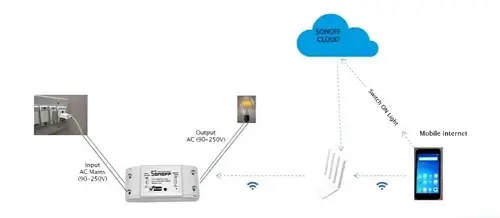Imagine trying to order pizza without giving your address. The delivery guy might wander the city forever with your pepperoni, and you’d still be sitting hungry at home.
That’s exactly how the internet would work without IP addresses. Every time you stream Netflix, send a WhatsApp message, or scroll Instagram, little packets of data need to know where to go. And just like pizza delivery, they need a clear, unique address to find you.
What’s an IP Address, Anyway?
An IP address (Internet Protocol address) is like the street address for your device on the internet. It tells data: “Hey, this is the exact device you need to reach.”
There are two main versions:
- IPv4: Short and simple, like
192.168.1.1. The original system—but we’ve nearly used them all up. - IPv6: Long and fancy, like
2001:0db8:85a3::8a2e:0370:7334. It’s designed to handle billions (actually, trillions) of devices—perfect for the age of smart homes and IoT.
Why Do We Need IP Addresses?
Without them, your cat video could end up at your neighbor’s house, and your emails might float off into nowhere.
IP addresses make sure:
- Your device is uniquely identified on the internet.
- Data packets find the right destination (like a GPS for the web).
- Billions of devices can communicate smoothly without mix-ups.
The Different “Flavors” of IP Addresses
Public vs Private
- Public IP: The main address the world sees—like your house number.
- Private IP: The inside address used within your Wi-Fi—like your bedroom number.
Static vs Dynamic
- Static IP: Fixed, never changes. Often used by businesses and websites.
- Dynamic IP: Assigned fresh every time you connect, like getting a new table each time at your favorite café.
IPv4 vs IPv6
- IPv4: The classic, but limited.
- IPv6: The upgrade with plenty of space for every phone, fridge, and smart doorbell out there.
Subnetting, Without the Headache
Subnetting sounds scary, but it’s just about organizing. Think of a giant apartment complex: subnetting gives each block and flat its own label so deliveries don’t get lost. It makes networks faster and easier to manage.
Clearing Up Common Myths
- “IP addresses show my exact house.” Not really. They reveal your city or area, not your living room.
- “Changing my IP makes me invisible.” Nope—it’s more like changing your P.O. box. You’re still around.
Why This Matters Today
From your laptop to your smart speaker to that Wi-Fi-enabled fridge, everything in your home has its own IP address. Multiply that by billions of devices worldwide, and you can see why IP addressing is the unsung hero of the digital age.
It’s not just technical—it’s what keeps the internet organized, safe, and working for all of us.
Final Slice (Pun Intended 🍕)
IP addresses may not sound exciting, but they’re what keep your Netflix streaming, your food apps delivering, and your WhatsApp messages landing in the right chat.
So the next time your Wi-Fi says, “Check your IP settings,” don’t panic. It’s just your device making sure it knows its place on the giant digital map we all share.
Because without IP addresses, the internet would be like pizza without cheese—completely lost.




